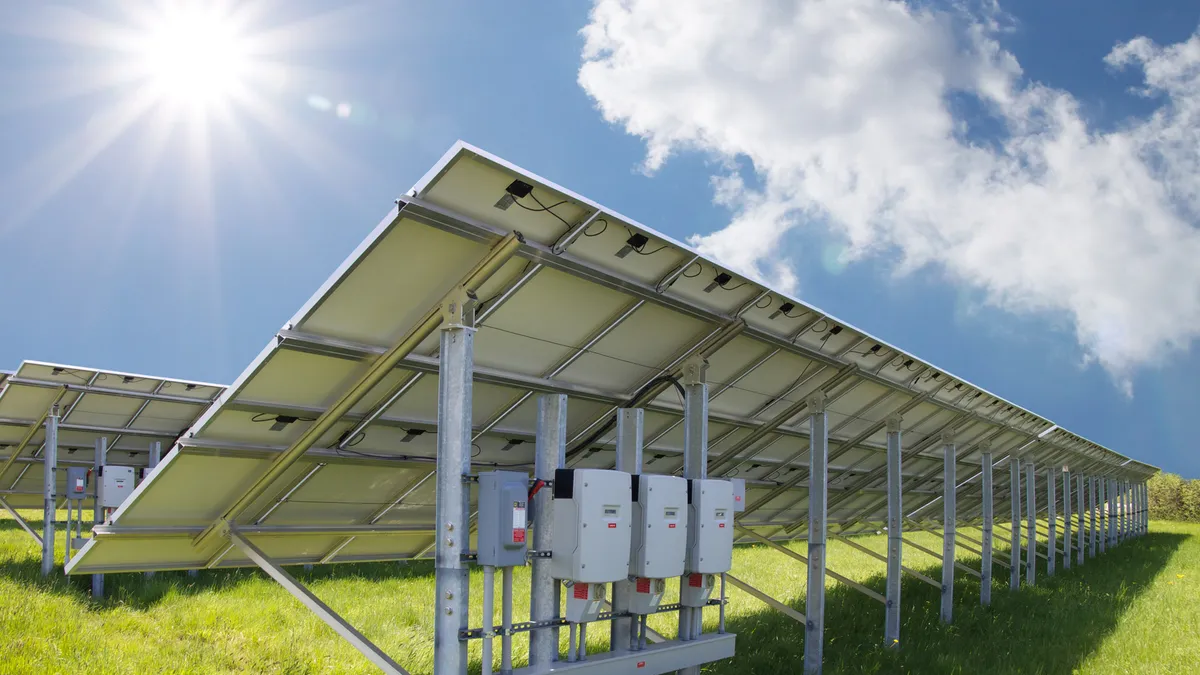Dive Brief:
- The California Public Utilities Commission issued a decision approving community solar regulations late in 2014 and is expected to finalize details late in January. Community solar plans allow utility customers to buy portions of solar arrays, by the kilowatt or by the module, and get credit on their bills for the electricity produced.
- Community solar is aimed at utility customers who are not homeowners or don’t have solar-suitable rooftops or good credit scores. With an estimated 75% of all residential rooftops unsuitable and the millions of renters and low income utility customers, the potential market in California is estimated at tens of millions of buyers.
- The CPUC-approved plan will allow utilities to charge community solar participants fees for grid use and maintenance that aren’t paid by rooftop solar customers. Solar advocates claim the fees fail to accurately balance the costs and benefits of distributed solar to the grid.
Dive Insight:
There are only an estimated 55 to 60 community solar projects in the U.S., with Colorado and Massachusetts leading the market. The U.S. market potential for community solar has been estimated as high as 7 times that of rooftop solar.
The Clean Energy Collective (CEC) is the leading developer of community solar. First Solar, one of the biggest developers of utility-scale solar in the world, recently bought a major interest in CEC.
CEC Corporate Development VP Tom Hunt told this reporter the best community solar policy laws are in Colorado, Minnesota, the District of Columbia, and Massachusetts.
The fees in the CPUC proposal could cause community solar participants' bills to increase by one-third, making participation unaffordable for renters and low-income electricity customers, according to Votesolar West Coast Director Susannah Churchill.














